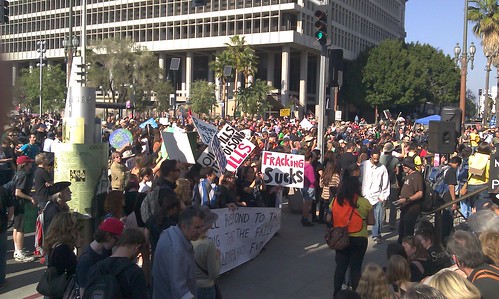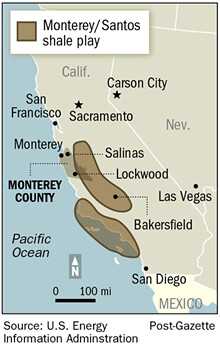If there’s one thing that’s been particularly consistent to campaigns of the far right in San Diego this fall, it’s the unusually desperate attempts to hide the real agenda from voters. It’s one that should be cause for optimism as long as voters pay attention, and betrays an almost impressive self-awareness from the top of the GOP that the party’s agenda has drifted well outside the mainstream.
From the special exemptions of Prop 32 to Brian Bilbray’s teetering re-election bid to Carl DeMaio’s bizarre mayoral campaign, extreme conservatives are doing everything they can to hide their record and who they are.
For the backers of Proposition 32, the deception was part of the design from the very beginning. They surveyed the political landscape and found that, unsurprisingly, nobody wants millionaires and corporations to be able to buy off our political process. Rather than abandon a wildly unpopular idea, they came up with a different plan: fake it.
Cross-posted from San Diego Free Press
That’s Prop 32, from the same white knights of campaign finance reform who broke the system to begin with by using the Citizens United case to overthrow existing regulations on special interest money. This year, they simply took it a step further, called the plan reform and packed in enough special exemptions to create a system that only works for corporations and millionaires.
It makes sense because everyone wants campaign finance reform. But the reason they want campaign finance reform is specifically because of what Prop 32’s backers have done and continue to do.
The hundreds of millions of unregulated, unlimited political cash flowing into SuperPACs exists specifically because of Prop 32’s backers, and now its being funded by the Koch Brothers and other super-rich conservatives that saw Citizens United as the starting pistol to buy off democracy. Prop 32’s hoping to trick voters. Will they see through it?
At the same time, there’s Brian Bilbray. He has cobbled together a decades-long career of faking moderation when election time comes around, but the reality just doesn’t match the myth he’s built for himself when push comes to shove. Bilbray wants to cast himself as an environmentalist, but mustered just a 17% score on the League of Conservation Voters 2011 scorecard. And it was Bilbray’s early work trying to gut the Clean Water Act that once inspired Donna Frye to become a clean water activist.
He’s done his best to avoid the ramifications of the national GOP’s war on women, right on through to Todd Akin’s ‘legitimate rape’ comments. But the reality of his record remains, including a pitiful 8% score from Planned Parenthood’s scorecard. Brian Bilbray may not want to be lumped in with the war on women, but if that’s what he’s hoping for, maybe he shouldn’t have signed up for it in the first place.
All of that could maybe be overlooked if Bilbray had taken up the mantle of the millions of Americans devastated when the economy fell apart near the end of the Bush administration. But while Bilbray will certainly have populist talking points on the stump, it’s worth remembering that he voted for the Paul Ryan plan to dismantle Medicare and destroy Social Security in response to increased economic security.
And Bilbray’s plan for economic recovery? One part rewarding tax-evading corporate interests, one part Let them eat a Yacht Race! Not exactly your tired, your poor, your huddled masses.
For Carl DeMaio, the attempt to whitewash nearly twenty years as a professional politician has been even more depraved than elsewhere. After coming up with the likes of Newt Gingrich, Virginia Thomas, the Jack Abramoff crew, and the Koch Brothers, it seems to have dawned on Carl that the city of San Diego, well… really doesn’t like that at all.
During his tenure on the council, DeMaio has received the lowest cumulative score on the annual Environmental Quality Report Card. And despite being appointed since joining the council, DeMaio hasn’t appeared in the minutes of a single meeting of the San Dieguito River Valley Regional Open Space Joint Powers Authority since January 2011.
Reality didn’t matter to DeMaio though when he took a week out to declare himself an environmentalist. He didn’t get very far with that, so he moved on to a plan to encourage biking by investing in more roads. Doesn’t make sense? It isn’t supposed to. It’s just supposed to distract from his career-long record on the wrong side of these issues.
Word on the street is, DeMaio spent some time recently trying for an endorsement from the Victory Fund, which led to an unexpected declaration from Carl that he was pro-choice. It has to be considered unexpected since it was certainly news to Planned Parenthood. Why? Because despite the clear reasons that choice matters at the local level, DeMaio has always refused to fill out Planned Parenthood’s questionnaire. And today, if you’re looking for pro-choice candidates in November, you sure aren’t going to find Carl DeMaio on the list.
There are still more examples. He runs as a fiscal conservative while voting against hundreds of millions in taxpayer savings and getting the BS treatment from Mayor Jerry Sanders. He tried out medical marijuana but that fell flat once anyone read past Carl’s own statement.
He took a quick stab at being for the middle class and affordable housing over the summer, trying to pass off support from a landlord group as support for tenants. The claims were called “preposterous,” and the former CEO of the San Diego Housing Commission said in no uncertain terms that “Carl DeMaio is not an advocate for more affordable housing.”
Heck, DeMaio has even tried reaching out to the Latino community while trumpeting an endorsement from Pete Wilson, the father of Proposition 187. And after casting the only vote on the council in support of Arizona’s SB1070, his Latino outreach has featured a plan to have local police enforce federal immigration law.
The most amazing part is the special brand of doublethink that DeMaio has going on in all this. He isn’t just making up an entirely new self for the general election, he’s doing it while criticizing others for the same thing. Like last week at the KPBS mayoral debate:
“The U-T CEO mentioned that he got support from labor, and yet labor has not supported it, that he got support from business groups, but very few groups that are out there have supported the plan,” DeMaio said. “And so I just think that the email probably was making some claims that are not grounded in reality.”
Now, it wouldn’t be shocking to discover the UT making claims that are not grounded in reality. But compare that to DeMaio’s recent record. He’s an affordable housing advocate unless you ask affordable housing advocates. He’s an environmentalist unless you ask environmentalists. He’s a medical marijuana advocate unless you ask medical marijuana advocates. He’s pro-choice unless you ask Planned Parenthood. He’s a friend to the Latino community except for wanting them to be harassed by the police. He’s a fiscal conservative except for imposing a billion dollar tax increase without a vote of the public.
But when Doug Manchester and John Lynch — the very same duo who helped DeMaio defeat essentially the same tax increase in 2005 — don’t poll well, then maybe reality has come loose.
Does it work? Maybe not with anyone who has the time and interest to dig into the substance. But those who never catch more than headlines because they have lives full of working to make ends meet, struggling with health care bills, working into retirement thanks to Wall Street, trying to figure out what to do after a foreclosure… they understandably won’t ever have that time.
And that’s the whole idea. Keep up the game of whack-a-mole long enough that voters never get a chance to examine the truth.
It’s said that great writers steal outright, so here’s a heartfelt tip of the cap to the inimitable Ann Richards before saying: Poor Carl.
He’s never once had a job that asked him to appeal to a majority, or even anyone resembling moderates. So now that he’s stuck in a general election, he’s like Columbus discovering America. He’s found the environment. He’s found the middle class and working people. He’s found women. He’s found the sick and suffering. He’s found Latinos.
Poor Carl. He can’t help it. San Diego just doesn’t want what he’s been selling his whole life.
I’m proud to work for San Diegans for Bob Filner for Mayor 2012








